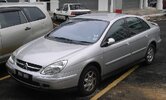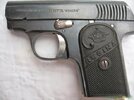Hello:
I have read a few opinions about the power, or lack of power, of weapons that fire .25 ACP ammunition. But I would like to know your opinion in this scenario:
Inside a car. If someone fires a .25 ACP bullet from the back seat to the front windshield:
1) Is there a reasonable probability that the bullet will ricochet down the windshield, without going through it, causing only a few cracks and bouncing inside the car twice more? Or is it almost certain the bullet to go through the glass?
2) If ricochet is reasonably likely, would we expect some deformation in the bullet or is it more likely that it appears almost intact?
I would like to know your opinions, and please, be lenient with my little knowledge about firearms.
I have read a few opinions about the power, or lack of power, of weapons that fire .25 ACP ammunition. But I would like to know your opinion in this scenario:
Inside a car. If someone fires a .25 ACP bullet from the back seat to the front windshield:
1) Is there a reasonable probability that the bullet will ricochet down the windshield, without going through it, causing only a few cracks and bouncing inside the car twice more? Or is it almost certain the bullet to go through the glass?
2) If ricochet is reasonably likely, would we expect some deformation in the bullet or is it more likely that it appears almost intact?
I would like to know your opinions, and please, be lenient with my little knowledge about firearms.



